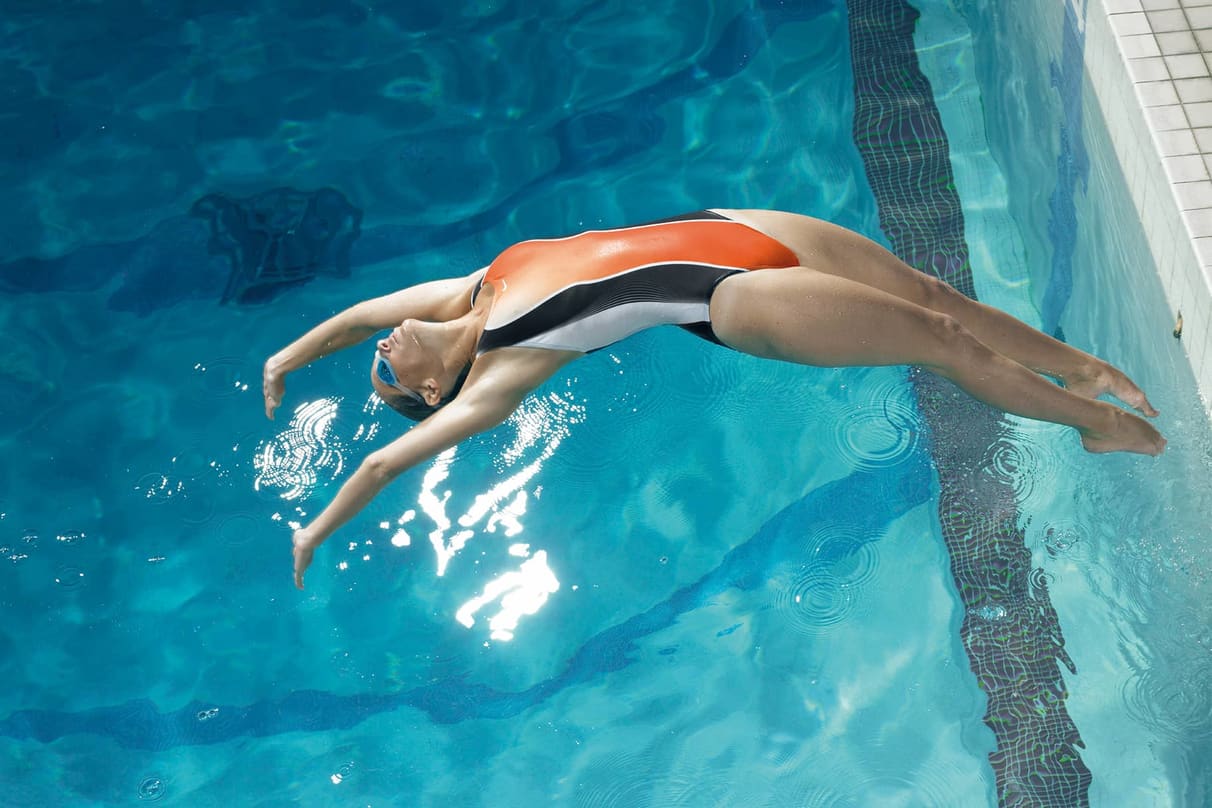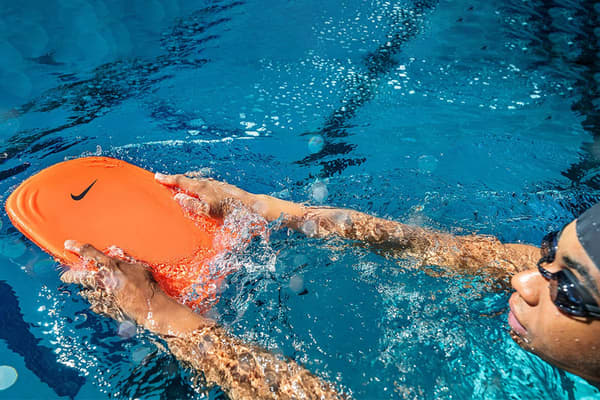What Are the Benefits of Swimming?
Sport & Activity
Swimming laps activates muscles throughout the entire body while also promoting feelings of relaxation.

Swimming is an incredible form of cardio, but unlike running and walking, it can be a little bit less accessible. After all, you need to find a pool that's supervised by a lifeguard and know a few different strokes to get a dynamic (and safe) workout in.
While it may take a bit more preparation than other forms of exercise, swimming provides unique benefits that some other activities, like walking and biking, can't offer.
5 Potential Health Benefits of Swimming
A swimming workout doesn't provide the same sensory experience that you might get from hiking, cycling or running, but that doesn't mean swimming isn't exhilarating. In fact, swimming offers many mental and physical advantages over other forms of exercise.
1.It's a full-body workout

Unlike some other endurance activities, swimming is a full-body cardio workout. You'll use muscles in the arms (biceps and triceps) to pull your body through the water and muscles in your shoulders (deltoids) and back (latissimus dorsi) give your stroke more power and speed. Your core keeps your body streamlined and hydrodynamic, while muscles in your glutes and legs are active when you kick, propelling you forwards.
While swimming doesn't provide the same strength-training benefits as lifting weights, there are ways to increase resistance and make your muscles stronger when you swim. For instance, many swimmers use paddles on their hands to increase water resistance and build a stronger, more efficient stroke.
If you're looking for more cardio and strength-training exercises, be sure to download the Nike Training Club (NTC) App.2.Swimming can be meditative

Doing a repetitive, rhythmic activity while immersed in water can be meditative for many people. In fact, some call it mindful swimming.
In an interview with the New York Times, Terry Laughlin, founder of Total Immersion Swimming explains that "by swimming mindfully, we can transform routine lap sessions into an immersive form of moving meditation".
He goes on to suggest that swimmers should set an intention to be fully present in the water and then focus on breathing and stroke mechanics. He adds that listening to the sounds of swimming and practising gratitude can provide additional mental health benefits.
According to an article published in the National Institutes of Health (NIH) News in Health, mindfulness practices like this can help people manage stress, cope with serious illness and reduce anxiety and depression. People who practise mindfulness also report a stronger ability to relax, greater enthusiasm for life and improved self-esteem.
3.It may help reduce body fat

Regular swimming workouts—when combined with a healthy diet—can help improve body composition (ratio of muscle to fat). It's important to note, however, that vigorous swimming, in comparison to casual water workouts, generally provide the greatest benefit.
For example, a 2015 study published in the Journal of Exercise Rehabilitation found that when middle-aged women swam vigorously for 60 minutes, three times a week for 12 weeks, their body fat dropped by almost 3 percent. The swimmers also demonstrated improved flexibility, cardiovascular endurance and blood lipids.
4.It's generally a safe, low-impact workout

Many popular contact sports and individual athletic activities carry a certain risk of musculoskeletal injury from impact. This can include contact with tarmac, other players or equipment that can lead to bruises, bone fractures and even more serious injuries. In this regard, swimming provides a safer environment to work out in.
The likelihood of these types of injuries taking place during swimming is minimised because moving in water is considered a low-impact exercise, as it reduces the effect of body weight through buoyancy, according to a 2015 review in the Journal of Exercise Rehabilitation.
Swimming isn't a risk-free sport though. Depending on the intensity you swim at, you could experience tendonitis in your biceps or a tear in your rotator cuff. But aside from injuries, there's one more risk at play when you swim in a pool.
For instance, a 2014 report published in the Bulletin of the World Health Organization (WHO) explains that swimming in pools, and other recreational water facilities, carry a risk of drowning or exposure to communicable diseases—aka infectious diseases—that can be spread from one person to another through blood, bodily fluids or airborne pathogens.The good news? The authors added that careful pool and spa safety regulations can substantially decrease these risks.
5.It may improve your blood pressure levels

Swimming may help you reduce your risk of developing hypertension, or high blood pressure. According to a 2018 study in the European Journal of Preventive Cardiology, it may even lower your blood pressure if you've already been diagnosed with the condition.
Case in point: in a 2014 study in BioMed Research International, 62 women with mild hypertension were randomly assigned to participate in high-intensity swimming, moderate swimming or a control group.
Researchers found that the high-intensity and moderate swimming groups decreased their systolic blood pressure (the top number), resting heart rate, and body fat percentage. But no changes were seen in the control group.
Aside from lowering blood pressure levels, swimming can offer a host of other health benefits. Researchers from a 2020 study, published in the International Journal of Environmental Research and Public Health, found that swimmers who swam in cold water had decreased triglycerides, better insulin sensitivity, fewer mood disorders and reduced risk of upper respiratory tract infections.
Frequently Asked Questions About Swimming
What equipment do I need to start swimming?
Most swimmers wear a swimsuit specifically designed for swimming laps. They typically have a sleek design with flat seams to prevent chafing. You'll also need a suit that can stand up to water wear and tear. For instance, Nike HydraStrong fabric provides long-lasting durability you can depend on swim after swim.
You'll also want to invest in a good pair of low-profile, flexible goggles and a silicone swimming cap to reduce drag. For outdoor swimming, some athletes prefer a wetsuit for cold-water conditions. You may also want to invest in training tools like a pull buoy or hand paddles, if they're within budget.
Should I take lessons before I begin a swimming workout programme?
If you've never done formal lap swimming, you may benefit from a few lessons from a certified swimming coach. A trained professional can teach you proper stroke mechanics to make your workouts more efficient. Swimming properly will also reduce your risk of injury and make your swims more enjoyable.




